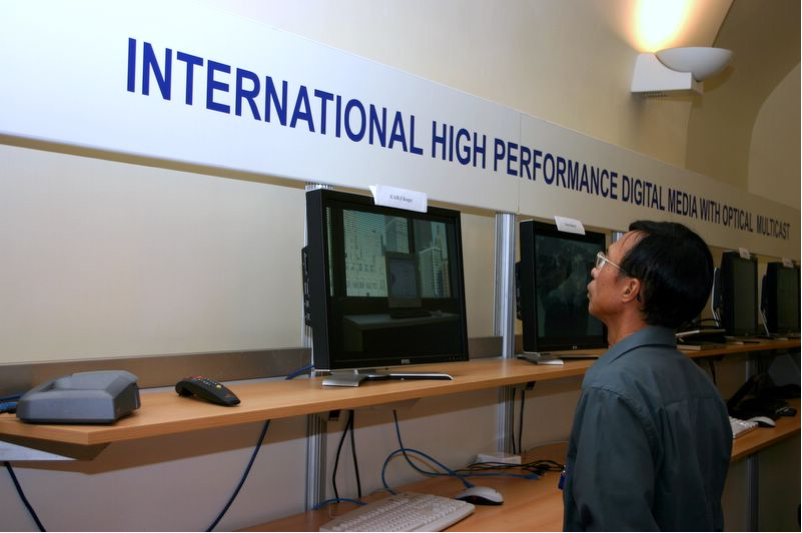Many types of digital media applications and services require large-scale, high-resolution, multipoint-to-multipoint streaming. Current techniques
for streaming digital media are limited because networks are designed to manage many small flows of information, not relatively few very-large-scale streams. Also,
standard routing techniques do not provide sufficient support for large numbers of high-volume streams.
A research consortium created an international testbed called HPDMnet to investigate new methods for streaming high-resolution digital media. In particular, HPDMnet
focuses on a new capability for communication services based on optical transport (i.e., optical multicast) of high-resolution digital media streams.
The first demonstration of HPDMnet happened at the 7th Annual LambdaGrid Workshop in Prague. Component technologies used included UCLP (User Controlled Lighpaths),
HARC (Highly-Available Robust Co-Allocator), and G-Lambda. Optical multicast was used to simultaneously stream several high-quality digital media streams among
multiple sites on three continents. At GLIF, large screens showed diverse media content, including cultural events and historic architecture (Barcelona), scientific
visualization (Louisiana), Akihabara “Electric Town” (Tokyo), a live MusicGrid lesson and Canadian landscapes (Ottawa), nanotech virtual instrumentation (Chicago), a
chess game (North Carolina), and experimental images (Amsterdam).
The second demonstration was at SC07 in Reno, NV. Component technologies utilized by this demonstration included Nortel’s DRAC (Dynamic Resource Allocation
Controller) and Inocybe Technologies’ Argia, which is built on UCLP concepts. Participating sites were Ottawa, Chicago, Amsterdam, Barcelona, and Reno. The
demonstration was awarded an SC07 Xnet designation (“eXtreme Networks”), identifying it as a cutting-edge demonstration that showcased new techniques.
URL:
www.icair.org/news/200711/20071115.html
Collaborators:
USA:
International Center for Advanced Internet Research, Northwestern University
Center for Computation and Technology, Louisiana State University
MCNC
Canada:
Communications Research Centre Canada
Inocybe Technologies
Nortel
Japan:
AIST
Spain:
i2CAT Barcelona
Czech Republic:
Masaryk University
Netherlands:
SARA
University of Amsterdam
Special thanks to CANARIE, CESNET, the Global Lambda Integrated Facility (GLIF), National LambdaRail and StarLight
